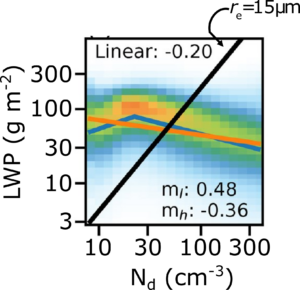Co-led by Annele Virtanen (UEF) and Johannes Quaas (ULEI)
This work package aims to improve the representation of cloud-, precipitation- and aerosol processes in earth system models, targeting a qualitatively more reliable simulation of effective radiative forcing due to aerosol–climate interactions.
Five key processes will be targeted:
1) An understanding of the response of cloud droplet concentrations to aerosol perturbations at aggregated scales (10-100 km), from observational data, as well as the development and evaluation of a revised parameterization for earth system models.
2) An evaluation and revision of the cloud droplet growth mechanism parameterizations (condensational and coagulation growth) for earth system models, on the basis of cloud-resolving modelling.
3) Revision and evaluation of parameterizations of ice formation (homogeneous and heterogeneous freezing, secondary ice formation) exploiting in situ observations and cloud-resolving modelling.
4) An evaluation and revision of the entrainment-mixing parameterizations in the context of aerosol-cloud interactions.
5) A revision of cloud processing and scavenging parameterizations for the aerosol schemes in earth system models on the basis of observations and process-scale modelling.


